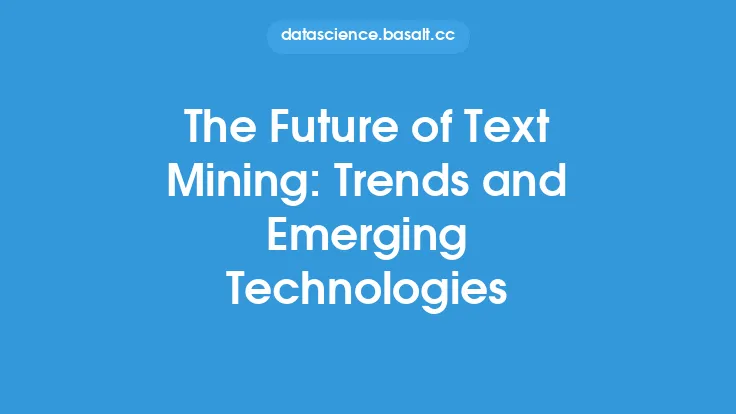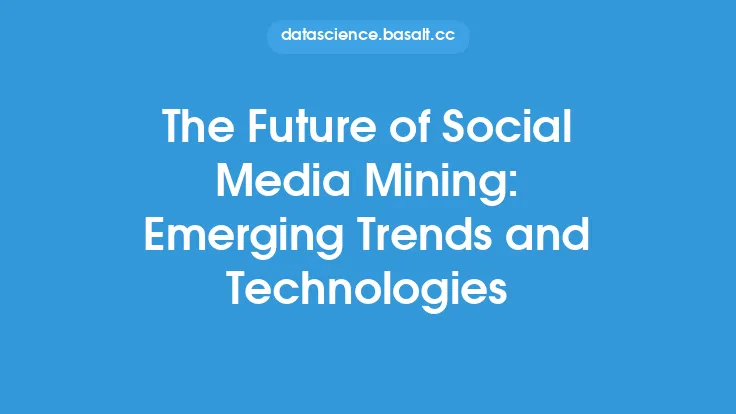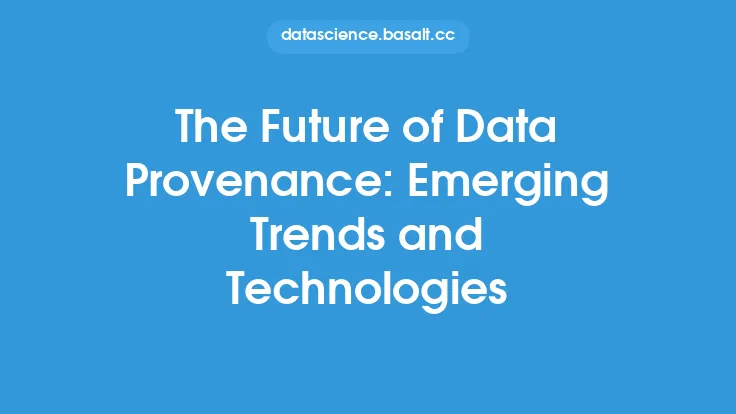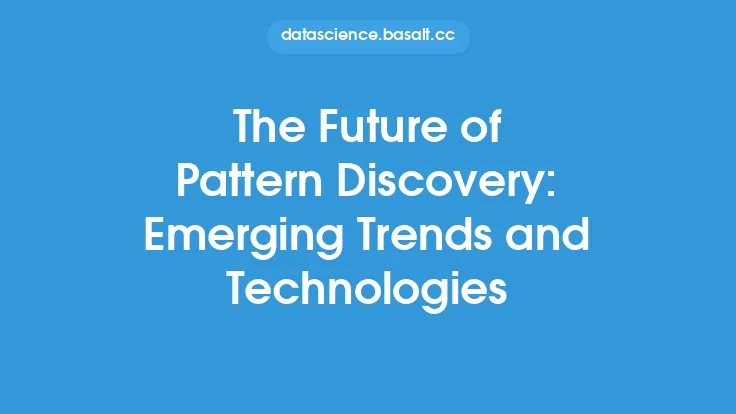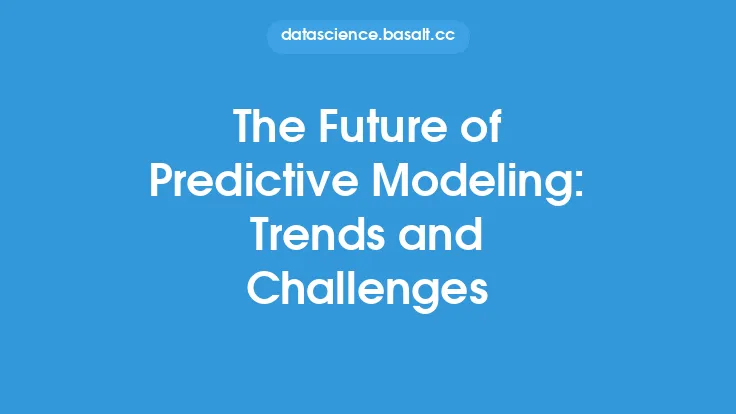The field of statistical inference is undergoing a significant transformation, driven by advances in computational power, the availability of large datasets, and the development of new methodologies. As data continues to play an increasingly important role in decision-making across various industries, the need for robust and efficient statistical inference techniques has never been more pressing. In this article, we will delve into the emerging trends and techniques that are shaping the future of statistical inference, and explore the implications of these developments for data scientists, researchers, and practitioners.
Introduction to Emerging Trends
One of the key trends in statistical inference is the increasing use of machine learning and artificial intelligence techniques. These methods have been shown to be highly effective in modeling complex relationships and making predictions from large datasets. However, they often require significant computational resources and can be difficult to interpret. To address these challenges, researchers are developing new techniques that combine the strengths of machine learning with the rigor of traditional statistical inference. For example, techniques such as Bayesian neural networks and Gaussian processes are being used to provide a more nuanced understanding of the relationships between variables.
Advances in Computational Methods
The development of new computational methods is also playing a crucial role in the evolution of statistical inference. Advances in Markov chain Monte Carlo (MCMC) methods, for example, have enabled researchers to fit complex models to large datasets with greater ease and efficiency. Additionally, the development of new algorithms such as variational inference and sequential Monte Carlo has expanded the range of models that can be fitted using computational methods. These advances have also enabled the development of new software packages and tools, such as Stan and PyMC3, which are making it easier for researchers to implement and apply complex statistical models.
The Rise of Bayesian Inference
Bayesian inference is another area that is experiencing significant growth and development. Bayesian methods provide a flexible and powerful framework for modeling complex relationships and making predictions from data. They are particularly useful in situations where there is limited data or where the data is uncertain. Recent advances in Bayesian inference have focused on the development of new algorithms and methodologies, such as Hamiltonian Monte Carlo and nested sampling, which have improved the efficiency and accuracy of Bayesian computations. Additionally, the development of new software packages such as JAGS and BUGS has made it easier for researchers to implement and apply Bayesian models.
The Importance of Model Uncertainty
Model uncertainty is a critical aspect of statistical inference that is often overlooked. Model uncertainty refers to the uncertainty associated with the choice of model and the parameters that are used to fit the data. Recent research has highlighted the importance of accounting for model uncertainty in statistical inference, particularly in situations where there is limited data or where the data is uncertain. Techniques such as Bayesian model averaging and model selection are being used to quantify and account for model uncertainty, and to provide a more nuanced understanding of the relationships between variables.
The Role of Big Data
The increasing availability of large datasets is also driving the development of new statistical inference techniques. Big data presents a number of challenges, including the need to develop methods that can handle large volumes of data and the need to account for the complexity and variability of the data. Recent advances in big data analytics have focused on the development of new methodologies, such as distributed computing and streaming algorithms, which can handle large volumes of data with greater ease and efficiency. Additionally, the development of new software packages such as Hadoop and Spark has made it easier for researchers to work with large datasets.
The Intersection of Statistical Inference and Machine Learning
The intersection of statistical inference and machine learning is an area that is experiencing significant growth and development. Machine learning techniques, such as deep learning and neural networks, are being used to develop new statistical models and methods that can handle complex relationships and large datasets. Additionally, statistical inference techniques, such as Bayesian inference and hypothesis testing, are being used to provide a more nuanced understanding of the relationships between variables and to evaluate the performance of machine learning models. This intersection of statistical inference and machine learning is leading to the development of new methodologies and techniques, such as Bayesian neural networks and statistical deep learning.
Conclusion and Future Directions
In conclusion, the field of statistical inference is undergoing a significant transformation, driven by advances in computational power, the availability of large datasets, and the development of new methodologies. Emerging trends and techniques, such as machine learning, Bayesian inference, and big data analytics, are shaping the future of statistical inference and providing new opportunities for data scientists, researchers, and practitioners. As the field continues to evolve, it is likely that we will see the development of new methodologies and techniques that combine the strengths of statistical inference with the power of machine learning and big data analytics. Ultimately, the future of statistical inference holds much promise, and it will be exciting to see how these emerging trends and techniques continue to shape the field in the years to come.
